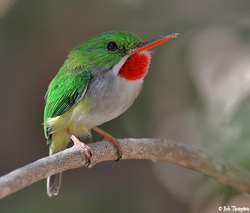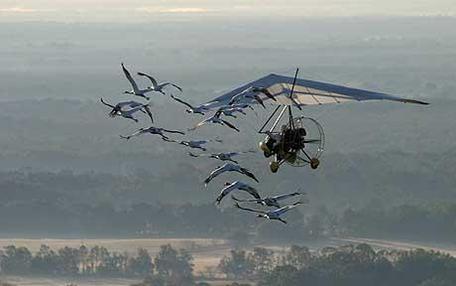Recent surveys on its coastal Patagonian wintering grounds indicate that the
Endangered Hooded Grebe
Podiceps gallardoi has declined by 40% in
the last seven years and this, along with alarming new threats detected on its
breeding grounds during 2011, indicate action is now urgently required to
prevent the rapidly increasing threat of its extinction.
In response to these worrying findings, Aves Argentinas (BirdLife in
Argentina) has mounted a wide-ranging offensive to protect this
highly-threatened migratory species from further decline. In support, we are
launching an international online appeal through the BirdLife Preventing
Extinctions Programme to help fund the urgently required conservation
action that they have already begun.
Please click here to visit BirdLife International's
appeal page and see a video of breeding Hooded Grebes filmed by our
conservation team last week. Discovered only as recently as 1974, Hooded Grebe has declined by as much as
80% in the last 30 years and as a result of surveys conducted in 2006 and 2009,
the species was uplisted by BirdLife to Endangered on the IUCN Red List in
May 2009. Recent counts on the wintering grounds last year, suggest the decline
is steepening further.
“Our teams started to become really worried when we realised that
there was more than one cause to tackle if we were to conserve the Hooded
Grebe”, said Gustavo Costa, President of Aves Argentinas.
In many of the lakes in the grebe’s core distribution, exotic trout have been
introduced for industrial fish production. “Trout rearing has reached the most
isolated places, and this industry is threatening not only the future of the
grebe but also the rest of the wildlife present in those environments”,
Gustavo Costa added. Also evident are the increasing numbers of Kelp Gull
Larus dominicanus, a known predator of the grebe that has benefited
from both the fish industry and poor waste management at human settlements.
As if these problems were not already enough to push this struggling species
over the edge, a breeding colony which Aves Argentinas was studying at Laguna El
Cervecero, Santa Cruz Province in March 2011, was devastated by a sinister
and ferocious invasive pest that is now advancing in western Patagonia: the
American mink,
Neovison vison. More than 30 breeding adult Hooded
Grebes were found killed by mink at this one site, and a further 40-plus eggs
were abandoned.
“This was one of the saddest days in my life as a naturalist, but at least it
meant that we had discovered another reason for the Hooded Grebe’s decline – and a very frightening one at that – that could allow us to implement suitable
management actions in the field”, said Kini Roesler, a field biologist who is
doing his PhD on the species.
As part of the immediate conservation action Aves Argentinas is coordinating,
a team of scientists and conservationists including staff from Aves Argentinas,
Ambiente Sur and CONICET are currently in the field attempting to prevent
predation at several known colonies this breeding season. Measures to
control mink and reduce predation by gulls are being prioritised and wherever
breeding populations are located, they plan to set up ’round the clock’ watches
to protect the nesting birds.
Climate change is also a major threat to this species and its habitat: anecdotal reports suggest that recent winter snowfall has been much reduced, without a corresponding increase in precipitation at other times. Many of the lakes surveyed last year were found to be dry or becoming clogged with silt as a result of the general desertification of the region, leading to changes in the composition of the water. Water levels at known breeding sites were 2-3 m lower than in previous years.
Recent investigations indicate that wind gusts have also significantly
increased in recent decades. Unseasonably strong winds have caused around
50% of all breeding attempts to fail in the last three years. At other
times this threat would be marginal; with adult mortality naturally very low,
the species may be adapted to survive a succession of poor breeding seasons.
But, with numbers now so reduced and still falling so rapidly, the loss of
entire breeding colonies to wind damage could have a much greater impact.
A stark shadow was cast over Aves Argentinas’s findings when, in May 2010,
the Alaotra Grebe
Tachybaptus rufolavatus of Madagascar was
declared extinct. This was the third known grebe extinction since the last quarter of the 20th Century, after the Colombian Grebe
Podiceps andinus and Atitlan Grebe
Podilymbus gigas, and followed news that the Critically Endangered Junín Grebe
Podiceps taczanowskii, which already had a population of fewer than 250 individuals, had suffered a further population decline.
“This is why we are developing an action plan for the Hooded Grebe, that
involves research, pest control and advocacy at every level”, said Dr. Andrés
Bosso, Director of Aves Argentinas’ International Co-operation Programme.
An initial meeting to develop a species action plan took place at Aves
Argentinas’s headquarters, in July 2009, and brought together specialists from
Ambiente Sur, Aves Argentinas, and Fundacion Vida Silvestre Argentina who are
now working closely together.
“We need to strengthen the protected areas system in the region”, Andrés
Bosso added. “Eight Important Bird Areas (IBAs) contain the species, but only
one is fully protected.” Laguna Los Escarchados, the site where Hooded Grebe was
discovered in 1974, was declared a reserve in 1979, but is now known to
only hold a marginal population. Key breeding lakes in the core of the
grebe’s range lack any kind of legal protection, though the population
stronghold on Meseta de Strobel is still afforded some protection by its
remoteness and inaccessibility.
Aves Argentinas has been appointed official
BirdLife Species Guardian for Hooded Grebe and is seeking funding for a range of urgent actions that are already in progress to ensure the survival of the species. These include implementation of summer and winter surveys and predator control in 2012, 2013 and 2014, embracing the entirety of the Buenos Aires, Asador, Las Vizcachas, Viedma, Cardiel and Strobel plateaus, the Coyle and Gallegos estuaries, and any of the plateaus reachable in winter. Surveys are also now being carried out on previously unsearched plateaus.
A number of local
conservation agents are also being assigned to the
species’ breeding and wintering grounds to execute a monitoring plan and
implement the needed conservation measures.
The programme to eradicate mink, control Kelp Gull numbers on the breeding
grounds, and help protect breeding sites from strong winds has already begun in
earnest. Farm-workers will be encouraged to become local “Hooded
Grebe Guardians”, monitoring the presence or absence of the birds, and give
Aves Argentinas early warnings of potential new threats to the species.
Conservationists are also seeking agreements with landowners on the plateaus to
purchase and/or protect their properties as private reserves.
Ringing/banding and satellite tracking will be used to improve knowledge of
the birds’ movements, and determine where juvenile Hooded Grebes spend the
winter.
A national campaign to raise awareness of the Hooded Grebe and its
predicament among the Argentinian public is also planned, with an additional
goal of having the bird declared an official National Monument. A team from
Aves Argentinas is currently in the field overseeing the filming of a Hooded
Grebe documentary which will be used in this campaign. This production is
being supported by the Argentine Ministry of Tourism.
There is clearly much to be done if the fortunes of the remarkable Hooded
Grebe are to be turned around. A robust plan is in place and work has already
begun but significant funding is now urgently required to deliver this ambitious
project and achieve long-term success.
Every little helps and every one can join in. If you would like to help save
the magnificent Hooded Grebe from slipping away, within just four decades of its
original discovery,
please click here to make a donation online
today.






 RSS Feed
RSS Feed